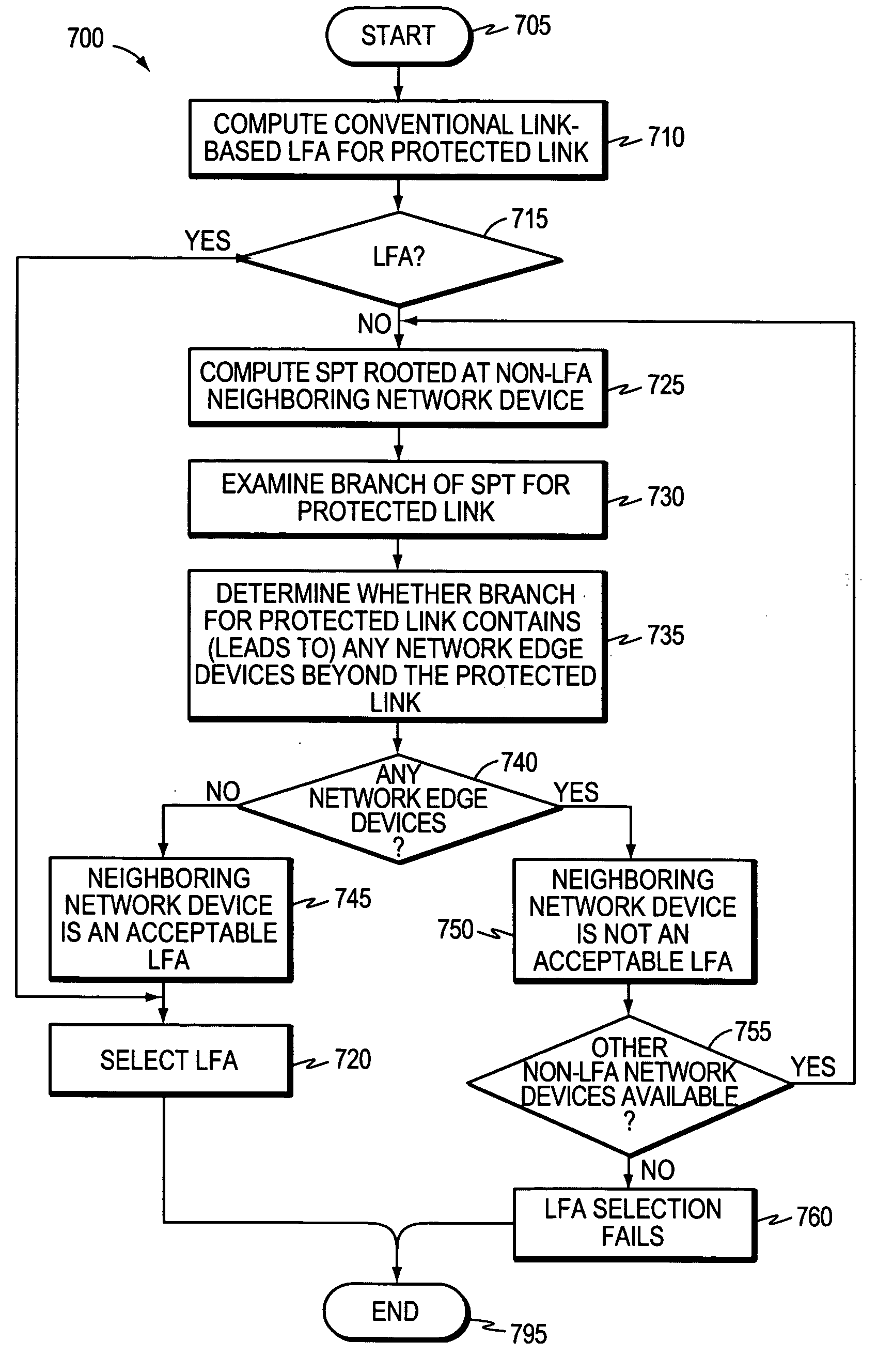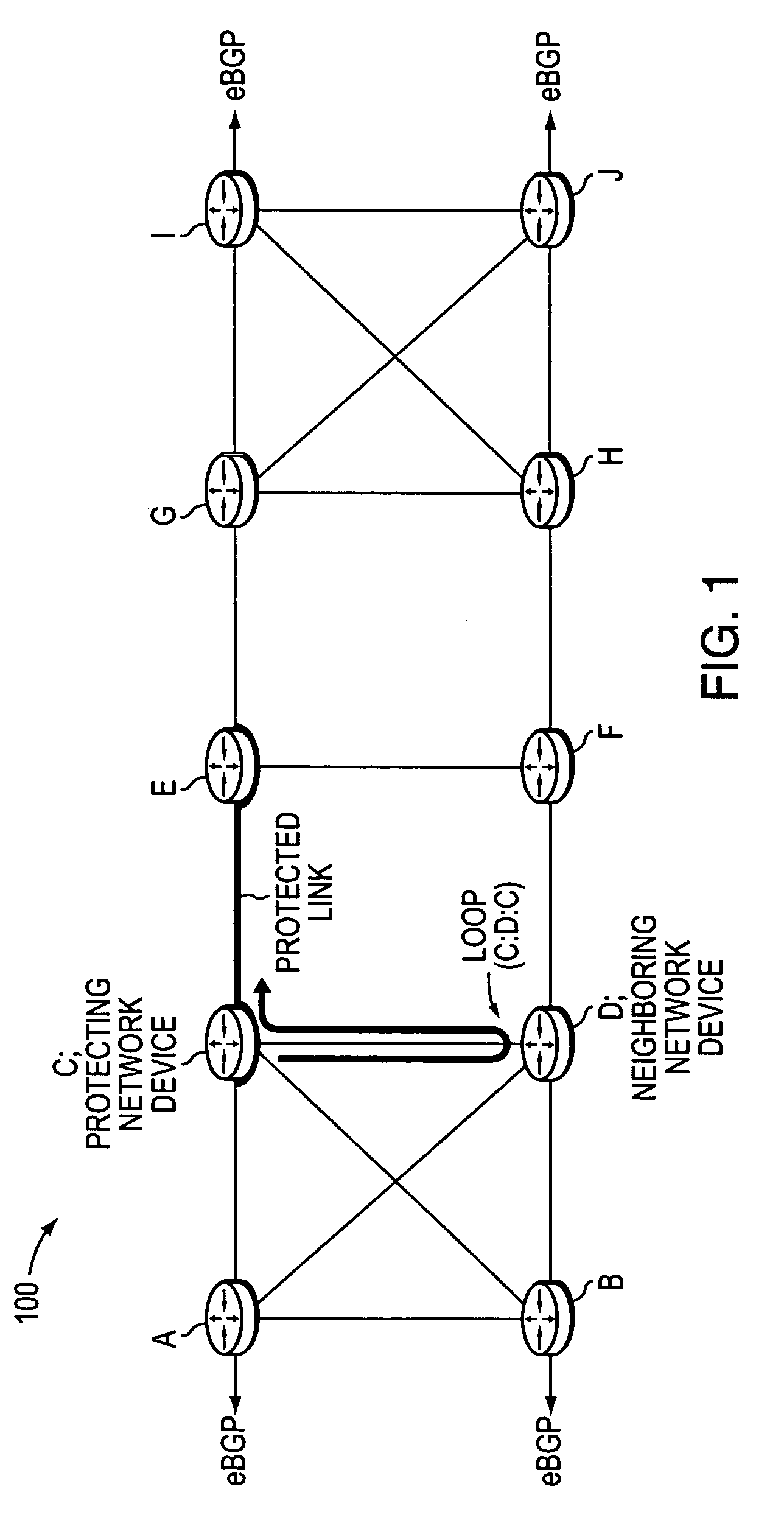Technique for efficiently determining acceptable link-based loop free alternates in a computer network
a computer network and loop free alternate technology, applied in the field of computer networks, can solve the problems of reducing the protection coverage of the network, affecting the efficiency of the network, and the burdensome management of the interconnected computer network, so as to achieve the effect of efficient determination of acceptable link-based lfas and expansion of protection coverag
- Summary
- Abstract
- Description
- Claims
- Application Information
AI Technical Summary
Benefits of technology
Problems solved by technology
Method used
Image
Examples
Embodiment Construction
[0033]FIG. 1 is a schematic block diagram of an exemplary computer network 100 that may be advantageously used with the present invention. The network 100 comprises a plurality of interconnected network nodes / devices, such as Routers A-J. The routers may be interconnected by one or more links as shown, such as, e.g., over local area network (LAN) links, wireless LANs, etc., to form the network 100. As used herein, the links connecting the routers are referred to as the two network devices interconnected by the link. For example, B may be reached from A via Link A-B (or, notably, Link B-A). IIlustratively, routers A-D are interconnected in a “full mesh” configuration where each router A-D is connected to each other router A-D via a link (G-J are also in a full mesh configuration). Also, routers C-F (and E-H) may be interconnected in a “square” or “box” configuration as shown and as will be understood by those skilled in the art. Network 100 may be configured as an autonomous system (...
PUM
 Login to View More
Login to View More Abstract
Description
Claims
Application Information
 Login to View More
Login to View More - R&D
- Intellectual Property
- Life Sciences
- Materials
- Tech Scout
- Unparalleled Data Quality
- Higher Quality Content
- 60% Fewer Hallucinations
Browse by: Latest US Patents, China's latest patents, Technical Efficacy Thesaurus, Application Domain, Technology Topic, Popular Technical Reports.
© 2025 PatSnap. All rights reserved.Legal|Privacy policy|Modern Slavery Act Transparency Statement|Sitemap|About US| Contact US: help@patsnap.com



